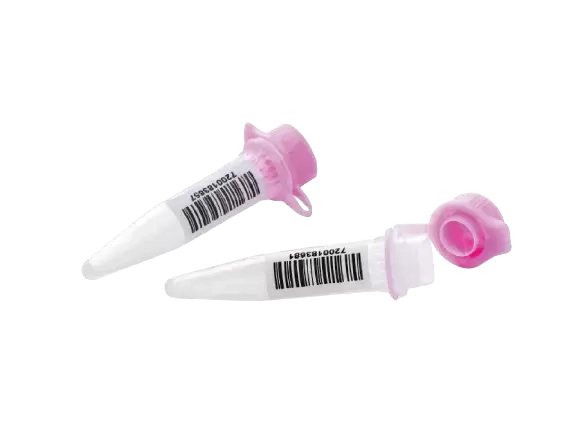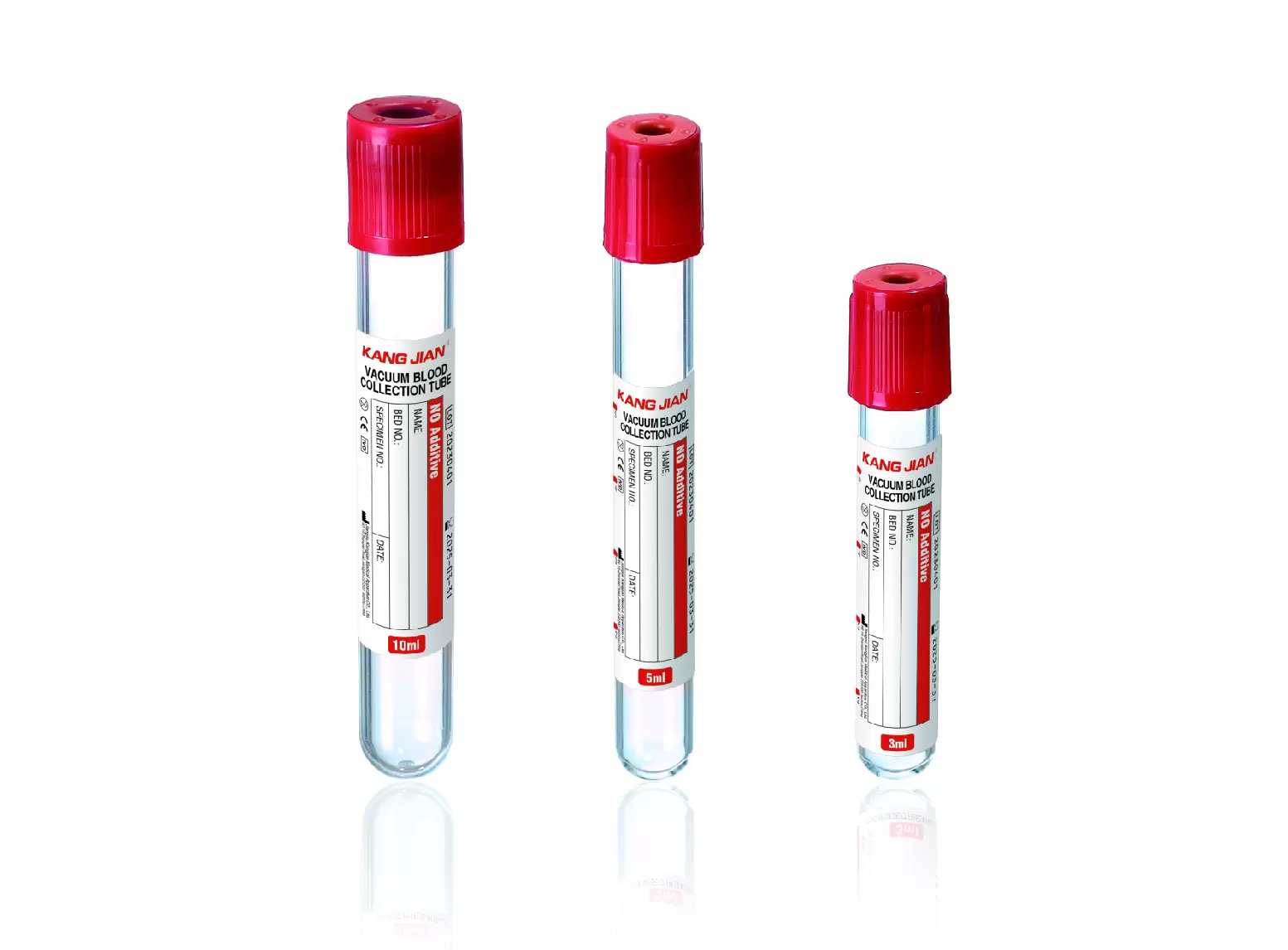Cross Incision Micro Blood Collection Tubes: A Revolutionary Solution for Precise Blood Sampling
In the ever-evolving field of medical diagnostics and research, precision and efficiency are paramount. Among the essential tools that facilitate accurate diagnostics, the cross incision micro blood collection tube stands out. This specialized device is designed to provide a safe, efficient, and minimally invasive method for collecting small blood samples, particularly in clinical settings where micro-sampling is required. Whether it's for newborn screening, point-of-care testing, or research applications, these tubes offer unique advantages that enhance the overall accuracy of blood collection procedures.
What is a Cross Incision Micro Blood Collection Tube?
A cross incision micro blood collection tube is a medical device designed to collect blood in small quantities through a cross incision mechanism. These tubes are typically used in situations where only a small blood sample is required, such as neonatal blood testing, point-of-care diagnostics, or research involving limited blood volumes. The cross incision technology involves making a small, controlled incision that facilitates blood collection, offering precision while minimizing discomfort for the patient.
The key advantage of these tubes is their ability to capture blood samples from a variety of sources with minimal invasiveness. They are engineered to reduce the need for multiple blood draws, making them ideal for use in vulnerable patient populations, such as infants, the elderly, or individuals requiring frequent testing.
Key Benefits of Cross Incision Micro Blood Collection Tubes
Minimized Pain and Discomfort
The cross incision technique used in these micro blood collection tubes is designed to reduce the discomfort typically associated with blood draws. Unlike traditional methods, which often require larger incisions or repeated attempts to obtain the sample, the controlled cross incision allows for a less invasive approach. This feature is particularly beneficial in pediatric care and for patients with sensitive veins or those requiring multiple tests.
By using the cross incision method, healthcare providers can minimize the patient's discomfort, promoting a more positive experience, especially in pediatric and geriatric populations who may have difficulty with conventional blood collection techniques.
Efficient Blood Collection in Small Volumes
One of the standout advantages of the cross incision micro blood collection tube is its efficiency in collecting small blood volumes. Traditional blood collection methods, such as venipuncture, often require larger amounts of blood, which may not be feasible or necessary in certain diagnostic scenarios. The micro blood collection tube allows for the collection of minute blood samples, making it ideal for tests that require only a small quantity of blood.
This capability is crucial for conditions that need frequent monitoring, such as glucose testing for diabetes or newborn screening, where minimizing the volume of blood collected can significantly improve patient comfort and reduce the risk of complications.
Precision and Accuracy in Blood Sampling
The controlled incision technique in cross incision micro blood collection tubes allows for highly accurate blood draws. This precision ensures that healthcare providers can obtain the correct amount of blood without causing excessive trauma to the blood vessels. Moreover, the design of the tube facilitates effective blood collection even in patients with smaller veins or limited access points, making it a versatile tool for various patient demographics.
The accuracy of blood collection is particularly important when testing for specific biomarkers or when conducting research that requires high-quality blood samples. The cross incision technique ensures that the blood sample is not contaminated or diluted, thus maintaining the integrity of the test results.
Improved Safety Features
Safety is a critical consideration in any medical procedure, particularly in blood collection. Cross incision micro blood collection tubes are designed with safety features that reduce the risk of complications, such as contamination or accidental needlestick injuries. The sealed design of the tubes ensures that the collected blood is contained securely, minimizing the risk of exposure to pathogens.
Additionally, these tubes are often equipped with mechanisms that prevent backflow, ensuring that the blood remains within the sterile collection environment and reducing the chances of contamination. This makes them a preferred choice in both clinical and research settings, where safety and hygiene are paramount.
Applications of Cross Incision Micro Blood Collection Tubes
Pediatric and Neonatal Blood Sampling
One of the primary applications of the cross incision micro blood collection tube is in pediatric and neonatal blood sampling. Newborns and infants have small veins, making it difficult to collect adequate blood samples using traditional methods. The cross incision tube provides a less invasive way to collect blood without causing undue stress or harm to the baby.
These tubes are particularly useful in newborn screening programs, where early detection of metabolic or genetic disorders is crucial. The small incision and efficient blood collection ensure that even the most delicate patients can undergo necessary testing with minimal discomfort.
Point-of-Care Diagnostics
Another significant application of the cross incision micro blood collection tube is in point-of-care diagnostics. In settings where immediate results are needed—such as emergency rooms, clinics, or mobile health units—these tubes enable healthcare providers to obtain accurate blood samples with ease and efficiency.
Point-of-care testing often involves quick blood analysis for conditions like anemia, glucose monitoring, and electrolyte imbalances. The precision and small sample size required by cross incision micro blood collection tubes make them an ideal choice for these rapid diagnostic tests.
Research and Clinical Studies
In clinical research, the need for precise and consistent blood samples is crucial. Whether for clinical trials, drug testing, or medical research, these tubes offer a reliable method for obtaining small, controlled blood samples. Researchers often require frequent blood draws to monitor specific biomarkers, and the cross incision technique ensures that the samples are collected efficiently and with minimal discomfort to the subject.
Additionally, these tubes are often used in animal studies, where small blood volumes are needed for blood analysis or drug testing. The micro collection capability of these tubes makes them a versatile tool for both human and animal studies.
Elderly and Geriatric Care
The elderly population often faces challenges with blood collection due to frail veins, making traditional venipuncture difficult. The cross incision micro blood collection tube provides a solution by allowing healthcare providers to collect blood with minimal trauma and discomfort. This is particularly important for elderly patients who may require frequent blood tests for chronic conditions such as diabetes, hypertension, or cardiovascular disease.
The reduced pain and ease of collection improve patient compliance and overall care, making this technology invaluable in geriatric healthcare settings.
How to Choose the Right Cross Incision Micro Blood Collection Tube
When selecting a cross incision micro blood collection tube, it’s important to consider several factors to ensure the right fit for the specific needs of the procedure:
Tube Size and Capacity: Different medical scenarios may require varying amounts of blood, so it’s essential to select a tube with the right capacity for the intended use.
Material and Sterility: The material of the tube should be compatible with the type of testing being performed, and it should be sterile to prevent contamination. Many cross incision micro blood collection tubes come pre-sterilized and sealed for added safety.
Needle or Incision Size: The size of the incision made by the cross incision technique should be considered based on the patient's age, condition, and the type of blood draw needed. Smaller incisions are typically used for pediatric and neonatal samples, while larger incisions may be needed for adult blood collection.
Additives: Some collection tubes come with additives, such as anticoagulants or preservatives, which may be required for specific tests. Ensure that the tube selected is compatible with the testing requirements.
Conclusion
The cross incision micro blood collection tube is a groundbreaking innovation in the field of medical diagnostics and research, offering significant benefits over traditional blood collection methods. From minimizing pain and discomfort to providing precise and efficient blood samples, these tubes are ideal for a wide range of applications, including pediatric care, point-of-care diagnostics, and clinical research.
With their ability to collect small blood volumes with minimal invasiveness, cross incision micro blood collection tubes are revolutionizing the way healthcare providers and researchers collect blood samples, making them a valuable tool in improving patient care and diagnostic accuracy. Whether used for routine tests or specialized research, these tubes provide a reliable and efficient solution for modern blood collection needs.




